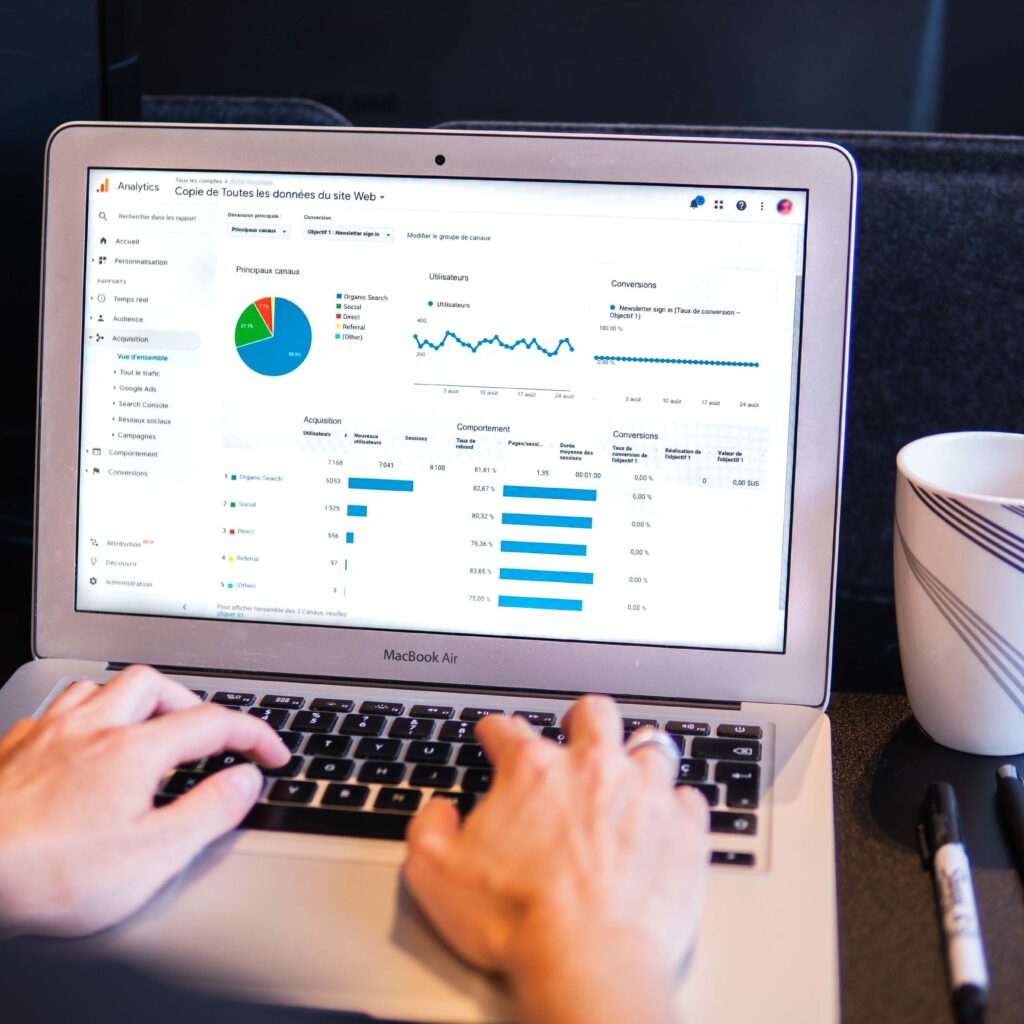25 SEO Terms Explained in Plain Language [With Examples]
Search Engine Optimization (SEO) makes it easier for people and Google to find your website. Understanding SEO is the hard part.
I mean, how many meetings have you sat through while an SEO specialist jabbers on and on about sitemaps and ranking factors and bots and all the while you’re thinking,
“HUH?”
Believe me, I’ve got the just-smile-and-nod down to a science. I’ve been there. Whether it’s a conversation with the accountant or the mechanic, the SEO guy or the lawyer, industry-specific language can be totally befuddling.
And then it gets scary: buying services without understanding what you’re getting.
Not cool. That’s why we created the Plain Language, Please! series; to make web marketing words and phrases easy to understand. Readers get bites of knowledge to help them thrive as savvy business owners in the Internet age, no textbook needed.
For this issue of Plain Language, we have 25 important SEO terms explained with conversational examples to help make communicating about SEO for your website crystal-clear:
Ready? Let’s do this.
Alt text
This is text that makes images recognizable to search engines. The text typically describes the image. For instance, the alt text for a picture of a balloon in the sky could read like this:
alt= “Balloon in the sky” />
This text basically tells search engines what the image is all about. When you add images to your website or blog, including alt text will improve your chances of higher search rankings.
“Be sure to add accurate, descriptive alt text to your blog post images.”
Black hat
The practice of using unethical techniques to make search engine rankings go up. Messing around with black hat SEO can get your website penalized and/or banned by Google.
“When you use black hat tactics, you run the risk of having your website banished from search engines.”
Blog
A type of website that is arranged in chronological order, with the most recent entry (‘post’) at the top of the page. Website owners use blogs to publish content (‘blog posts’), and receive feedback (‘comments’) from readers.
Business blogging gives business owners the opportunity to improve website search rankings by regularly publishing fresh, engaging blog posts related to their industry. Check out our blog for an example of a business blog in action.
“Search engines love fresh, well-written blog content because it shows that your website is current and providing value for its visitors.”
Content
We think content marketing expert Joe Pulizzi says it best: “Content is compelling information that informs, engages or amuses.” Marketers create, curate and publish content online with the objective to drive profitable customer action.
Search engines such as Google love useful, fresh content on websites. The more value your content appears to deliver, the greater your chances are for ranking high for related search queries. Content types include:
- Blog posts
- Case studies
- Videos
- Infographics
- E-books
“When was the last time you updated the content on your website? Adding new pages of fresh content could influence your current position on Google.”
Domain
The familiar and easy-to-remember name that acts as an address for your website. Whenever someone refers to a domain, they’re talking about the word or phrase that appears between “www” and “.com/.ca/.net/etc. It looks something like this:
“Have you chosen a domain for your new website? I would recommend picking a phrase or word that relates directly to your brand, or is your brand name.”
Headings
Text that titles different sections of content on a page. Typically, headings are presented as larger and bolder than other text on the page, in order to call attention to its message.
Headings have SEO value when they are placed inside of heading “tags”, such as H1 or H2. “Tags” alert search engine spiders to what the page is all about, and makes it easier for them to index the information for search engine results.
“Our copywriter can write headings that include your target keywords.”
HTML
The computer language within your website that search engines read to understand what it’s all about. HTML can be organized by web programmers to be more search-engine friendly.
“If we make changes to your website’s HTML, we can increase usability and impact search engine rankings.”
Inbound link
A link from one website to another website. When other reputable websites display links to your website, your search engine quality score goes up.
Think of it like a popularity race – the more websites mention your website, the more legitimate and high-quality your website appears to search engines.
“The inbound link to your website from the Huffington Post article has helped increase traffic 240%.”
Indexed pages
The pages of your website that are checked out and then stored by search engines. Pages that are not indexed do not appear in search results. That’s why it’s important to make your website pages easy for search engines to index.
“How many indexed pages are there on your website?”
Internal link
A link that connects one page on a website to another page on the same website.
For example, a link on your homepage that connects users to your “Contact Us” page is considered an internal link. These links give search engines an organized structure of your website, which makes it easier to list individual pages on search results.
“Including internal links to pages on your website that are important is a good way to alert search engines to those pages’ value.”
Keyword
A word or phrase that a user types in a search bar to find results for.
Some keywords are searched for more than others; that’s why it’s important to optimize your website to appeal to the right keywords for your target customers.
But there’s a flipside: including too many keywords on a page, to the point where the text is total jumble, can get you in deep trouble with search engines. There are penalties for this offence known as “keyword stuffing”.
“When we write the text for your website, we are going to ensure that it includes keywords to help boost your search rankings.”
Link-building
Practices for increasing the number and quality of inbound links to a webpage. Search engines give favour to websites with high amounts of quality inbound links.
“Writing guest blog posts for other relevant, well-read blogs is a great link-building strategy.”
Long-tail keyword
Search queries with three or more words in them. For instance, the long-tail version of “kittens” would be “kittens for sale in Kelowna.”
Marketers use long-tail keywords on their websites to improve search engine rankings for more specific phrases. You can imagine how thick the competition is for a keyword like “kitten” – targeting a more specific phrase like “kittens for sale in Kelowna” cuts through the competition, delivering higher, more targeted results.
“Do some audience research to determine the best long-tail keywords for your business website.”
Meta Description
A brief, compelling statement that describes what a website page is about and why someone should visit it. It appears on search results below the page title as a sample of content on the page.
“Before you publish your blog post, make sure to add an enticing meta description to encourage users to read it.”
Organic results
Search engine listings that appear because of their relevance to the search terms, not because they have been paid for directly through advertising.
“Google claims that visitors click organic results more often than ads.”
PageRank
The mathematic equation Google uses to determine the importance of a website. PageRank is one of many factors that help Google decide how to rank websites in search listings.
So how does PageRank measure importance? It looks at the number and quality of links to a page. And this is why inbound linking tactics are valuable to increasing search engine rankings. The more high quality links to your website there are on other websites, the better.
“PageRank is one of over 200 ranking factors Google uses to determine a page’s popularity.”
Panda
A series of Google search engine updates intended to crack down on crappy, spammy content and encourage website owners to publish more high quality stuff.
“Since Google introduced Panda in 2011, content marketing has become more and more relevant to improving search engine rankings.”
PPC
Paid advertising in search engine result listings. It stands for Pay-Per-Click, because advertisers only pay when web users click the ad spot. PPC advertisements typically direct web users to the advertiser’s website or affiliated page.
“PPC advertising is a great strategy for businesses with niche audience appeal.”
Ranking Factors
Specific traits search engines such as Google and Bing look for to determine where to place a website on a SERP. Google claims to use over 200 ranking factors in the process.
This Plain Language, Please article includes a list of examples of ranking factors to give you a better idea of what’s involved. We’re talking content, links, social media and more.
“With the right combination of ranking factors, your website has a better chance of moving to one of the top spots on Google for your targeted keywords.”
SERP
Stands for Search Engine Results Page. It’s the page you are sent to after you search a word or phrase (keyword/phrase) in a search engine like Google or Bing. It typically has 10 results on it.
“Does your website appear on the SERP for the keyword you are targeting?”
Sitemap
A visual or textually organized “map” that shows all the content on a website. This “map” is for website visitors and search engines. Here’s what they get:
Website visitors get fast access to exactly the content they want on a website.
Search engines get an easy way to read and organize (“index”) the content for search results. The easier it is, the better.
Not all websites have sitemaps, but the SEO-savvy ones do. You can typically access a sitemap on a website by clicking a link that says “Sitemap”, usually on the homepage or “About Us” page.
“The best way to ensure your entire site is indexed by Google is to include a sitemap.”
Social Media
Interactions among people in virtual communities and networks such as Facebook, Twitter, Instagram, Google+, LinkedIn, FourSquare and Pinterest.
The content that is shared, created and talked about on these websites often appears in high-ranking search engine results. That’s why it’s important for businesses to incorporate social media into their marketing tactics.
“Let’s get you set up with social media, say Facebook and Twitter, to help improve your search engine rankings.”
Spider
Also known as a crawler, bot or searchbot. This is an automated program that “crawls” through Internet pages (such as the pages on your website), looking for information to organize (“index”) for search engine results.
Spiders keep search engines such as Google organized, so (for example) when a user types in a query like “Mexican restaurants in Kelowna”, there is already an index of pages to show as relevant results.
“When Google’s spiders scan your website, they are looking for keywords related to your business.”
Traffic
The number of visitors to a website, and the pages they click while on the website. Traffic to your website is important because the higher its traffic is, the more popular the website should be.
There are tools such as Google Analytics to track traffic volume and number of clicks per page over time, which helps web designers and marketers develop and edit strategies to increase traffic.
“We noticed that when you post blog articles to your website on a weekly basis, web traffic to the e-store increases.”
URL
The web address of a page on your site. For example:
https://www.navigator.ca/services/web-design/
That’s a URL – a Uniform Resource Locator. It was designed to replace numerical addresses on the web and make it easier for humans to read.
URL size and readability matters to search engines. It can’t be too long – never longer than 2048 characters – and shouldn’t employ any special characters (hyphens, underscores, spaces, etc.) to separate words. Search engines want descriptive, yet brief URLs that explain what the page is about.
“What does the URL for your website homepage look like? If it makes semantic sense and includes keywords, it could help your SEO efforts.”
What other SEO terms do you think deserve the “Plain Language, Please!” treatment?
Ready to get started? Book an SEO consultation with Navigator Multimedia today.
See Also
Google AdWords Glossary of Terms



10
Johnny Rogers
Sarah, thanks for sharing! Several of my colleagues greatly appreciated you post. Have a good one. P.S. I will continue to share your post with all who can benefit from it.
Regards!
Sarah Bauer BA English Literature
Thanks, Johnny! Really appreciate hearing that you and your colleagues find it useful!
See you around the Internet,
Sarah
setting up google authorship
Thanks for finally writing about > SEO Terms Explained In Plain Language
| Kelowna Web Designs < Liked it!